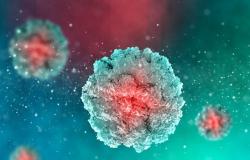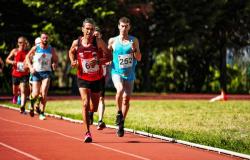Remember that osteoporosis is not a disease specific to women, it can also affect men, but in a smaller percentage, which is precisely why the vast majority of epidemiological data are collected from women.
content
What is osteoporosis?
Osteoporosis affects the skeleton and causes bone mass and bone quality to suffer. Because of this disease, essential minerals for the body, such as calcium, are no longer assimilated by the bone, which leads to a weakening of the mechanical resistance of the bone, thus increasing the risk of fracture.
Types of osteoporosis
- Primary osteoporosis it is the most common osteoporosis encountered and manifests itself more in women after menopause; it can also be found in men, especially after the age of 70.
- Secondary osteoporosis it presents the same symptoms as primary osteoporosis and can appear at any age as a result of other conditions or complications of some pathologies (rheumatoid arthritis, systemic lupus erythematosus, cancers, etc.).
- Osteogenesis imperfecta represents a rare form, encountered in most cases from the womb (it is a genetic disease that will manifest itself through bone pain, bone deformations in the child, growth problems and frequent fractures.
- Idiopathic juvenile osteoporosis it is also very rare, found among both sexes during childhood or adolescence; its causes are not yet fully known.
Osteoporosis symptoms
Osteoporosis is a disease with slow evolution (hence the name “silent, silent affection”), fractures do NOT occur in the early stages, and when symptoms of osteoporosis appear, they can be:
- At the level of the spine – severe back pain, decrease in height, appearance of spinal deformities (hunchback, for example)
- Brittle bones – fractures that occur spontaneously after a fall and/or minor accidents, sometimes even after performing normal movements (bending, lifting) or during a coughing episode.
Causes osteoporosis
Osteoporosis occurs due to the loss of too much bone mass and the appearance of changes in the structure of bone tissue.
Among the patients with osteoporosis, many have different risk factors that increase the probability of osteoporosis, but there are also patients who do not have specific risk factors and who still develop this disease.
- Decreased production of estrogen in women and testosterone in men
- Calcium deficiency and vitamin D deficiency
- Genetic predisposition
- Inactivity
- Smoking
- Excessive alcohol consumption.
Find out more about what diseases sedentary behavior causes and how do we combat sedentary behavior?
Risk factors for osteoporosis
The category of risk factors for osteoporosis includes both aging and belonging to the female sex (factors that cannot be modified or controlled), as well as factors related to lifestyle – physical activity, diet rich in calcium and proteins or vice versa, a poor diet throughout life, the level of vitamin D, etc.
Among the risk factors involved in the occurrence and development of osteoporosis are:
- Belonging to the female sex – women are more prone to osteoporosis. In general, they have smaller and thinner bones compared to men, which means that although the bone mineral density is similar to that of men, the peak bone mass is lower. Also, the production of estrogen (female sex hormone) after menopause drops drastically. With the onset of menopause, the ovaries stop producing estrogen and progesterone, estrogen plays an important role in maintaining bone density and bone health.
- Age – as people age, the phenomenon of bone loss appears at a much faster rate, and new bone growth is slower. Over time, bones become more fragile, and the risk of osteoporosis increases. Specifically, bone resorption (destruction) exceeds bone formation, leading to a physiological loss of bone mass.
- Antecedents of osteoporosis in the family history – several studies have highlighted the fact that the risk of osteoporosis is higher in those who have one of their parents with a history of osteoporosis or hip fracture.
- Hormonal changes – low levels of certain hormones increase the risk of osteoporosis, for example the drop in estrogen levels after menopause, low estrogen levels due to hormonal disorders or extreme physical activity and effort. In men, conditions that cause a decrease in testosterone levels expose them to the risk of osteoporosis.
- Diet – an unbalanced diet starting from childhood and up to adulthood and old age, poor in calcium and vitamin D increases the risk of osteoporosis. At the same time, a diet that is too rich or too poor in protein can increase the risk of bone loss and osteoporosis.
- The presence of other medical problems – such as endocrine, hormonal diseases, gastrointestinal diseases, rheumatoid arthritis, certain oncological pathologies, HIV/AIDS, anorexia nervosa.
- Drugs – long-term administration of certain drugs to treat other conditions, such as glucocorticoids, antiepileptics, hormone-based drugs used to treat breast and prostate cancer, proton pump inhibitors used to reduce stomach acidity, indicated thiazolidinediones in the treatment of type 2 diabetes.
- Lifestyle – daily choices and routines can influence bone health. A sedentary lifestyle and prolonged periods of physical inactivity, chronic alcohol consumption, smoking have a negative impact.
Osteoporosis tests and analyses
Bone densitometry (DXA) is currently the reference standard by which the most important factor in predicting fracture risk is measured – bone mineral density (respectively calcium content).
This test is recommended for all women who have reached the age of 60, or women who have entered menopause, thus being associated with other risk factors.
When is a DXA exam necessary?
According to the International Society of Densitometry, it is advisable to do a check to measure bone mineral density if you fall into one of the following categories:
- Women over 65 years old
- Menopausal women under the age of 65, but with risk factors (Caucasian race, frail constitution, weight under 57 kg, smokers, sedentary or with prolonged bed rest, with hereditary and personal history of fragility fracture, etc.)
- Perimenopausal women with clinical risk factors (low weight, previous fracture, medication that predisposes to an increase in the risk of fracture)
- Men over 70 years old
- Men under the age of 70, but with clinical risk factors
- Adults with fragility fracture
- Adults with diseases and/or treatments that associate low BMD or loss of bone mass (eg: chronic glucocorticoid treatments)
- Any person who will start a pharmacological treatment for osteoporosis or who is under monitoring for anti-osteoporosis treatment.
Call center
SCHEDULE NOW
Examinations with DXA equipment
- The standard test consists in the examination of the lumbar spine from the postero-anterior incident and of the hip. Depending on your needs, our doctors will continue to recommend the exams you need.
- Examination of the front spine (postero-anterior incident) – measures the bone mineral density at the level of the L1-L4 vertebrae and indicates the presence or absence of a theoretical risk of fracture for the axial skeleton. The exam helps monitoring and can also be done for children.
- Hip exam (proximal femur) – indicates the presence or absence of a theoretical risk of local fracture and evaluates the bone mass in association with the spine examination. The test monitors the condition and is necessary before a local surgical intervention (such as prosthetics).
- Forearm examination (distal 1/3 of the radius) – in certain situations, the examination also determines the density at the level of the radius (in the case of surgery on the spine or hip, degenerative changes, excessive obesity, scoliosis, hyperparathyroidism).
- Examination of the lumbar spine in the lateral incidence (profile) – it measures the bone mineral density at the level of the vertebral body (place of fracture), eliminating the artifacts given by osteophytes, aortic calcifications, degenerative changes of the articular facets, etc. The testing is combined with the examination of the lumbar spine from the postero-anterior incident. It does not require repositioning, being a sensitive method for following the dynamics of changes in bone density, occurring as a result of the treatment or in its absence.
- Skeletal examination and quantification of tissue composition – with its help, the global risk of fracture can be evaluated, we quantify the adipose and musculo-connective tissue and dynamically measure the changes occurring in response to diet and/or physical exercise. It is painless and can be performed even in the case of children
- Profile image T4-L4 +/- vertebral morphometry – the method is fast and evaluates the presence or absence of vertebral depressions (as a result of bone fragility). Irradiation is reduced and captures the thoracic and lumbar spine in a single, undistorted image. The procedure allows us to identify and classify the subsidence of the vertebrae through quantitative methods (morphometry), determining the bone mineral density in parallel. Repositioning is not necessary.
- Prosthetic examination – we measure changes in periprosthetic bone mineral density after total hip arthroplasty.
Preparing for the DXA examination
There is no need to prepare specifically for the DXA examination. You can eat without worrying before, and during the exam you will remain dressed. We will only remove metal objects (staples, zippers, coins and bills, piercings or other objects that overlap the segment to be scanned) to obtain the most accurate result.
You must not have performed examinations with oral and/or IV contrast substances (CT, MRI, barite transit, etc.) in the last 7 days and you must not have taken calcium tablets on the day you come for the examination. We also have to exclude the possibility of a pregnancy, in which case the examination is not possible.
We have a team of doctors who make sure that you or your parents, who are no longer in their prime, have a healthy bone system.
In our clinics, Medicover specialist doctors can diagnose osteoporosis based on data related to risk factors, clinical examination and paraclinical tests (bone densitometry, x-rays and blood and urine analyses).
You can schedule a consultation at the Medicover Victoriei Clinic or you can schedule your child for an examination at the Medicover Pediatric Clinic by calling 021 9896.
Osteoporosis treatment
Osteoporosis treatment aims to prevent fractures and maintain or increase bone density and from case to case it may involve a combination of lifestyle changes, food supplements and drugs:
- Adequate consumption of calcium and vitamin D
- Physical activity – walking, jogging, etc
- Medicinal therapy usually only on the recommendation of the rheumatologist, but it can also be indicated by an endocrinologist. It is important to mention that there is no single, universal medicine suitable for every patient with osteoporosis.
A healthy bone system means more mobility and freedom of movement every day. Do not deny yourself the pleasure and the need to move freely at any age. A diet balanced in calcium and vitamin D, regular physical exercises, a healthy lifestyle, without excessive consumption of alcohol and smoking, as well as the determination of bone mineral density through specific tests and the initiation of drug treatment when necessary are essential pillars in the prevention of osteoporosis.
References:






